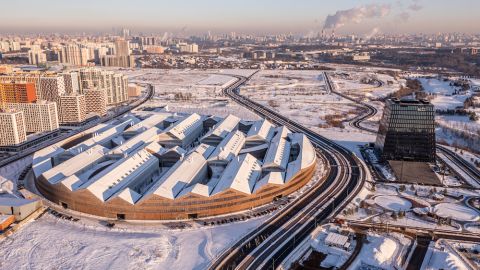Researchers Notice Spontaneous Formation of Multiple Quantum Vortices in Optically Excited Semiconductor Microcavities
A team of researchers from Skoltech, Universitat Politècnica de València, the Institute of Spectroscopy of RAS, the University of Warsaw, and the University of Iceland has made a significant breakthrough in the field of quantum physics. They demonstrated the spontaneous formation and synchronization of multiple quantum vortices in optically excited semiconductor microcavities. This discovery paves the way for exploring new platforms to simulate condensed matter systems using polariton quantum vortices. The study, published in Science Advances, reveals how these vortices, when arranged in optically structured lattices, exhibit antiferromagnetic coupling, with each vortex carrying an opposite topological charge to its neighbor.
Quantum Vortex Formation in Semiconductor Microcavities
Breakthrough in Polariton Quantum Vortices
Researchers successfully demonstrated the spontaneous formation of quantum vortices within semiconductor microcavities. These microcavities consist of a resonator formed by two highly reflective mirrors with InGaAs quantum wells sandwiched between them. The team achieved a strong light-matter coupling regime, resulting in the formation of exciton-polaritons, quasiparticles that represent coupled states of excitons and confined cavity photons.
Optically Generated Lattices and Antiferromagnetic Coupling
By employing advanced optical techniques, the researchers generated lattices of quantum vortices, revealing that neighboring cells in these lattices tend to have opposite topological charges—akin to an antiferromagnetic coupling. This discovery marks a significant advancement in the understanding of quantum vortex dynamics and opens up new possibilities for simulating condensed matter systems using optical methods.
Experimental Techniques and Observations
Spatial Light Modulation and Lattice Formation
The experiments were conducted at Skoltech’s Hybrid Photonics Laboratory, led by Professor Pavlos Lagoudakis. The team used spatial light modulation to shape a patterned laser beam into an array of tightly focused Gaussian beams arranged in a hexagonal lattice. By varying the lattice parameters and excitation power, the researchers observed the condensation of polaritons within the lattice cells.
Single-Cell and Multi-Cell Vortex Interactions
Initial experiments focused on single-cell behavior, where polariton condensates exhibited vortex states with equal probabilities for positive and negative topological charges. However, when interacting in pairs of neighboring cells, the vortices formed stable vortex-antivortex pairs. The team then extended their study to larger triangular lattices, confirming the presence of antiferromagnetic order across the lattice.
Theoretical Insights and Correlations with Ising Spin Hamiltonian
Extending Antiferromagnetic Order
The researchers suspected that the observed synchronization of vortices was not limited to small clusters but extended across the triangular lattice. To verify this, they measured the vortex charge (orbital angular momentum) of each condensate across multiple lattice configurations. Their findings revealed significant correlations between the observed vortex charges and the low-energy configurations of the Ising spin Hamiltonian, a well-known model in condensed matter physics.
Projecting Dynamics onto Condensed Matter Systems
This research underscores the potential of projecting complex dynamics observed in one system onto another, revealing unexpected similarities. By exploring the behavior of polariton quantum vortices, the team has provided new insights into the study of condensed matter systems, particularly in relation to antiferromagnetic coupling and vortex synchronization.
Collaborative Effort and Support
Multinational Research Team and Theoretical Support
The study was a collaborative effort involving researchers from multiple institutions. The experimental work at Skoltech was supported by the Russian Science Foundation (RSF) grant no. 21-72-00088. In addition to the first author, Assistant Professor Sergey Alyatkin, the Skoltech team included Research Scientist Ivan Gnusov, Junior Research Scientist Kirill Sitnik, and Professor Pavlos Lagoudakis. Theoretical insights were provided by Dr. Helgi Sigurðsson from the University of Warsaw and the University of Iceland, Prof. Yaroslav V. Kartashov from the Institute of Spectroscopy of the Russian Academy of Sciences, and Dr. Carles Milián from the Universitat Politècnica de València.
This groundbreaking work opens new avenues for research into the dynamics of quantum vortices and their potential applications in simulating complex condensed matter systems.
